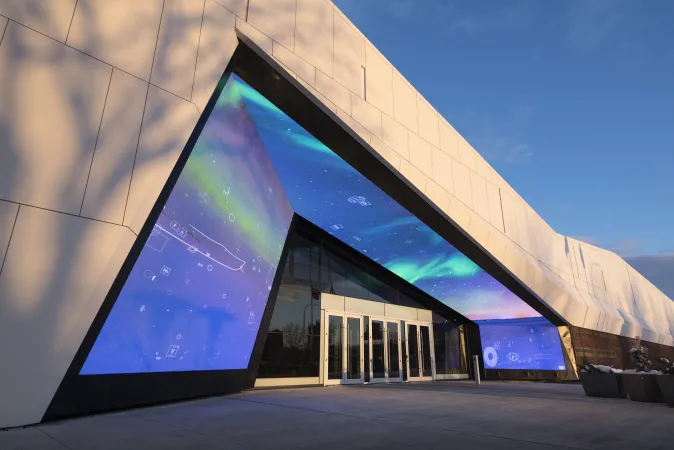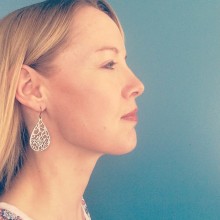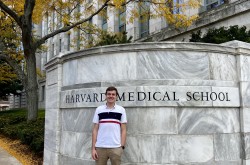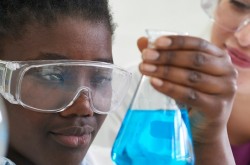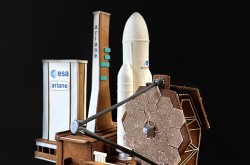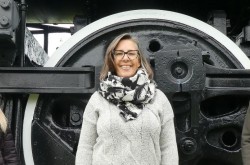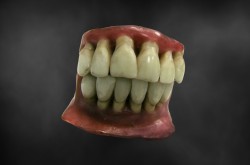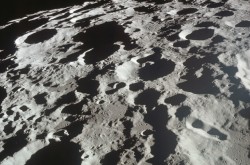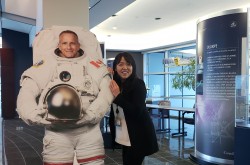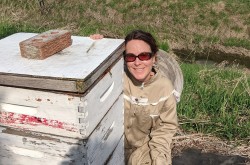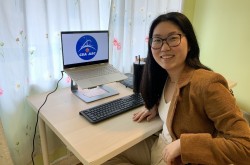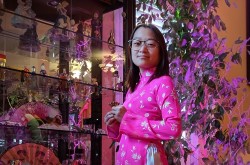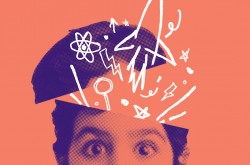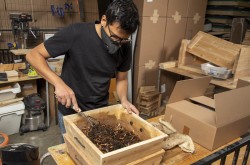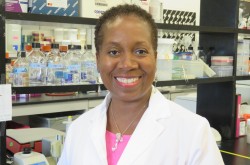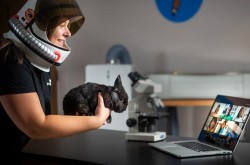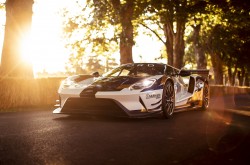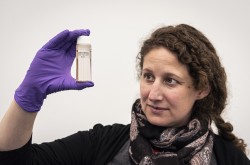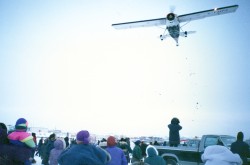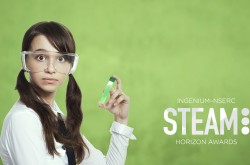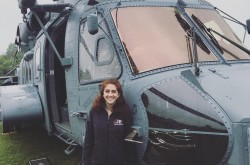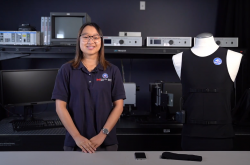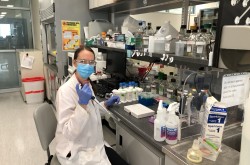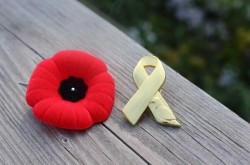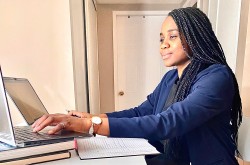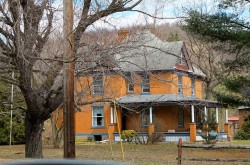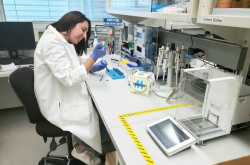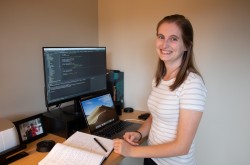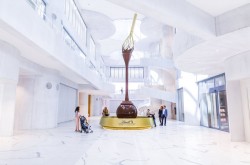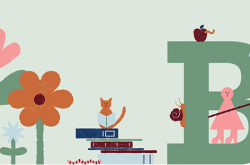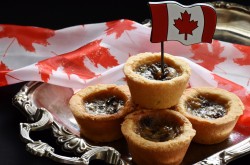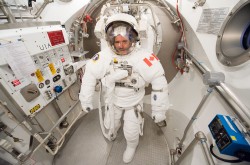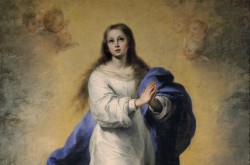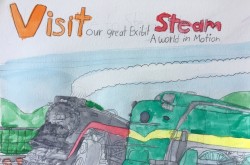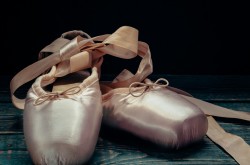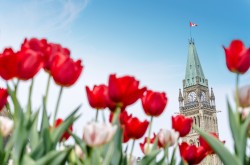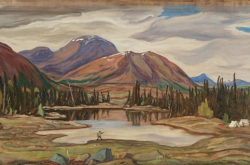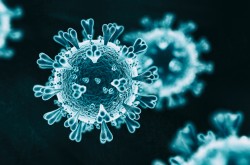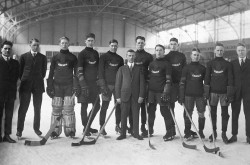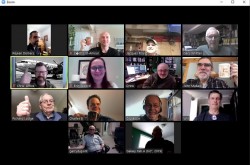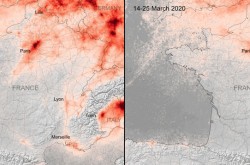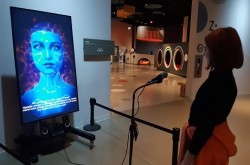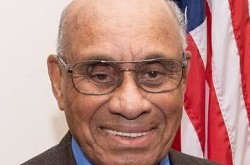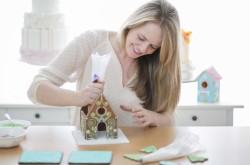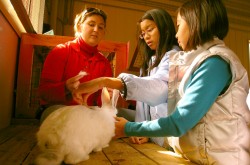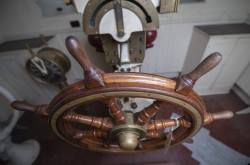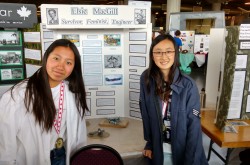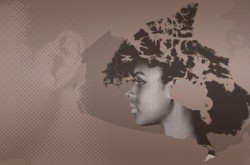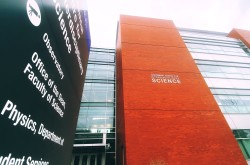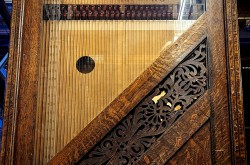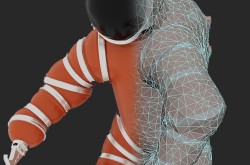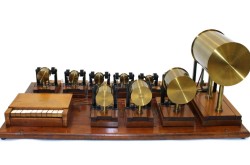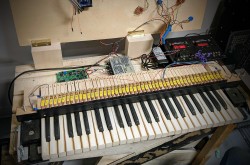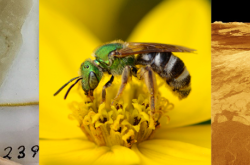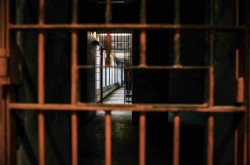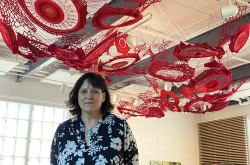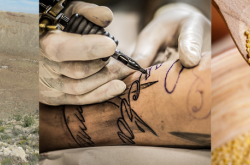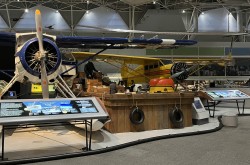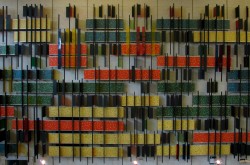Award profile: Reinventing the Canada Science and Technology Museum
On November 17, 2017, the Canada Science and Technology Museum marked a pivotal moment in its history. The museum reopened its doors to the public, starting a fresh chapter following a three-year closure.
In the three years leading up to that momentous event, a small team of dedicated employees worked tirelessly to rebuild the entire facility from the ground up—including the creation of all-new exhibitions—in preparation for reopening. It was an incredible feat of teamwork that did not go unnoticed. Last spring, Ingenium – Canada’s Museums of Science and Innovation was honoured with the Canadian Museum Association’s Award of Outstanding Achievement in Exhibitions, for temporary, permanent, or travelling exhibitions that effectively and distinctively contribute to increase public understanding.
The Ingenium Channel reached out to each of the teams that worked to make the award possible, and asked them to share their memories along the road to the museum’s reopening. The result is a collection of anecdotes about how a remarkable group of people came together as a team to achieve collective success.
The Curatorial Team
By Bryan Dewalt
Curators work at the interface between the museum collection and the public – to do a good job, we have to look in both directions. We work directly with the public to acquire objects for the national collection. We also contribute to public understanding by researching objects, selecting objects for exhibition, and collaborating to tell compelling stories about objects. Nevertheless, when I began my career as a curator I did not expect I would one day be standing with a clipboard in an Ottawa shopping mall, asking the public questions about objects.
For the Canada Science and Technology Museum renewal, the curatorial team was given a daunting but exciting challenge: to show the public more of the collection than ever before and to bring out some “hidden treasures” that might be exhibited for the first time. Although we did our best to propose exhibition topics that would have public appeal and focus on areas of collection strength, we knew success would not depend on our expertise alone. From the beginning, we worked closely with exhibition staff and contract designers, to craft a visitor experience that would optimize the public’s physical and intellectual access to the artifacts. We also collaborated with experts outside the museum, to ensure the information we provided was accurate and that it represented diverse Canadian experiences of science and technology. Finally, at the urging of exhibition staff, we talked to ordinary people about objects, what interested them, what confused them, what questions they asked.
This was how I found myself in the St. Laurent Shopping Centre on a Thursday evening in the fall of 2015. I was there—well outside my comfort zone—with exhibition staff, showing off sandwich boards on which we had pinned photographs of artifacts. The purpose was not so much to decide what objects to exhibit, but to learn more about how potential visitors might respond to them and what meanings they might construct from the groupings we had created. In a sense, as one curator put it, this was yet another form of research, one that could improve our understanding of the objects by seeing them through the eyes of others. It was also a great demonstration of the teamwork, professionalism, and openness that we tried to practise through all phases of the museum’s renewal. In the end, no one person can claim credit for the new Canada Science and Technology Museum. It took dedicated, experienced staff with a broad range of skills and a willingness to collaborate – not only with each other, but with the public.
Team members: Anna Adamek, Sharon Babaian, Cédric Brosseau, Tom Everrett, Emily Gann, William Knight, Michel Labrecque, Molly McCullough, David Pantalony, and William McRae.
Team Access
By Gabrielle Trépanier
To the already long list of challenges that crop up while re-imagining and re-building a national museum from scratch and in only a few short years, the Canada Science and Technology Museum added the daunting goal of becoming truly accessible. Sure! Great! No sweat. Yikes.
To make change happen, you need a critical mass of people in different departments and at different levels of leadership. You need patient listeners and tenacious fighters. You need support and courage from the top, because it takes time and resources. Amazingly, over the three years of this project, all of these necessary conditions fell into place. We even won an award, by the Rick Hansen Foundation’s Accessibility Certification Program.
That said, the funny thing is that “Team Access” was never a formal team. There was no committee, no terms of reference, no team meetings. Instead, a like-minded network of colleagues took it on. From within our respective positions, we learned how to create standards that would let us build accessible experiences. We learned how to work with designers unfamiliar with universal design. We chose to make exhibits that included people with disabilities, both their stories and their technologies, and in so doing we reached outside the Museum, creating new networks of advisors and experts.
Looking back now, I’ve learned that being accessible is not a state so much as a pursuit. We made mistakes, many of them, both large and small. We’re still working on the fixes.

A group of boys test out a super-sized microscope interactive in the museum's Hidden Worlds exhibition.
The Project Management Team
By Rachelle Fournier
I can think of many moments along the path to the reopening of the museum. But I must say that the most memorable and rewarding for me was to see a young boy's reaction, in front of his mother, when he was experiencing the microscope in the Hidden Worlds exhibition. He suddenly turned to his mother, and he looked like his entire body was shaking. Then he said very loudly, “Mommy, this is the best museum ever!” He must have been seven or eight years old. His eyes—and his entire face—were lit up with excitement. I knew then that we had succeeded in our goal of bringing science into the lives of people. These reactions are the ultimate rewards.
Team members:
Artifact Alley: Kevin Garnett, Carolyn Holland, William Knight, Fiona Smith-Hale, Kristy von Moos, Tony Missio, Jacey Kennedy, Andrew Macdonald, Chris Jaja.
Children’s Gallery: Sylvaine Champagne, Annie Jacques, Sue Warren, Sian Jones, Anna Adamek, Nori Gowan, Andrew Macdonald, Chris Jaja.
From Earth to Us: Sylvaine Champagne, Dawn Hall, Anna Adamek, William McRae, Sue Warren, Morley Ouderkirk, Patrick Legault, Kristy von Moos, Andrew Macdonald, Chris Jaja.
Moving and Connecting: Serge Duguay, Andre Dessaint, Britt Braaten, Sharon Babian, Cédric Brosseau, Tom Everrett, Molly McCullough, Kevin Machan, Morley Ouderkirk, Marcia Mordfield, Kristy von Moos, Marc Cappelli, Andrew Macdonald, Chris Jaja.
Creating and Using Knowledge: Rachelle Fournier, Annie Jacques, Dawn Hall, David Pantalony, Michel Labrecque, Erin Secord, Kristy von Moos, Sylvie Bertrand, Morley Ouderkirk, Andrew Macdonald, Chris Jaja, Nori Gowan.
Technology in Our Lives: Rachelle Fournier, Carolyn Holland, Tom Everrett, Emily Gann, Sean Tudor, Molly McCullough, Erin Secord, Kristy von Moos, Catherine Campbell, Andrew Macdonald, Chris Jaja, Nori Gowan.
Augmented Reality: Renée Racicot, Annie Jacques, Fiona Smith-Hale, Patricia Montero, Sue Warren, Andrew Macdonald, Chris Jaja.
The Exhibition and Interpretation Team
By Annie Jacques
November 19, 2017 at 8:45 a.m. It was opening day. The staff had gathered in the front hall as we impatiently waited for the front doors of our new museum to open. Colleagues from every department were assembled: folks from exhibitions, programing, curatorial, conservation, purchasing and more. It was the first time that the entire extended team was assembled, and I remember looking around and feeling overwhelmed and proud of what our team had accomplished.
At 9 a.m., the doors opened. A slew of visitors entered the new building with large smiles on their faces. Staff were clapping and giving high-fives to visitors. For a moment, it was as though time had stopped; I remembered all the hours spent on the project, all the effort and hard work aimed towards this one goal. I was literally in tears. It was probably one of the most memorable moments of my whole career.
Team members: Annie Jacques, Carolyn Holland, Britt Braaten, Dawn Hall.

The Programming Team (left to right): Cassidy Swanston, Valerie Lefebvre, Catherine Emond, Line Pivin, and Corrie Bouskill.
The Visitor Experience Team
By Valerie Lefebvre
For the programming team, the reopening of the museum was like a relay race. The whole team was faced with the challenge of not having access to the museum until right before opening day. This meant that we were testing experiments in the parking lot, training staff in hard hats and shoe covers, and unpacking materials on our day off. Our very first full run-though of the demo stage show, Pyro-techno, was presented in front of a packed audience on opening day. During this time, the team really came together to support each other, making sure that no one team member was tackling all of the challenges on their own. Although we had many long days, the energy around this time was incredibly positive and fun – and we all crossed the finish line together.
Team members: Catherine Émond, Corrie Bouskill, Anouk Adam, Valerie Lefebvre, Annique Latrémouille, Gerald James, Daniel Filion, Jonathan Jerome, Sylvie Jones, Andréanne Tessier, Luc-André Guibord, Line Pivin.

During the rebuild of the museum, the locomotives were covered in little raccoon footprints.
The Conservation and Collections Team
By Sue Warren
A conservation challenge
The four locomotives stayed in the museum while the building was demolished and re-built around them. They were protected from the construction activity by plywood hoarding, and covered in plastic sheeting. We thought we had planned for everything, but what we hadn’t anticipated was the early visitors who took up residence over the winter: a family of raccoons spent a cozy few months sleeping, eating, and being generally destructive inside the cabs of three of the locomotives. They were not pleased with being evicted in the spring (and in fact, made one more attempt to move back in after construction was complete!), but they had their revenge by leaving us with a big mess to clean up. In addition to having to clean up their “toilet” areas—and removing the many hundreds of little dirty footprints—all of the seats had to be recovered because they had torn through every single one, in their search for soft bedding material.
Conservation in its element!
Our new collection showcase gallery, Artifact Alley, was a real pleasure for conservation staff to work on. We care for the collection on a daily basis, and know it perhaps better than anyone in the museum. When we were asked to contribute ideas about which objects to include, many of us suggested our favourites. Then we had the pleasure of working on them! Ask any one of our team to show you their choice, and I guarantee you they will be smiling when they do so. This is a display of some of our most beautiful, interesting, and engaging artifacts – many of which have never been on exhibit before.
Team members:
Canada Science and Technology Museum: Jessica Lafrance-Hwang, Kevin Machan, Tony Missio, Patricia Montero, Erin Secord, Sue Warren
Contract conservators: Cindy Lee Scott, Jacqueline Riddle
Mountmakers: Kenn Bingley, Derek Brousseau, Joe Crupi
Canada Aviation and Space Museum: Matt Bruce, Raymond Contant, Rejean Demers, Erika Range

A McLaughlin Carriage Company poster is an example of the trade literature that was selected for display.
The Library and Archives Team
By Catherine Campbell
A memorable moment along the path to the reopening
“Did you see the McLaughlin Carriage Company poster in Artifact Alley?”
Early in the reboot process, Library and Archives staff spent time with exhibit teams, trying to get a sense of the themes of the various exhibits, then combing through our collections looking for the perfect images which would enhance the interpretation of the artifacts – or stand on their own.
We pored over photographs, drawings, and other material in the Archives, delved into the Rare Book Room, browsed back issues of older periodicals and hauled out endless pieces of trade literature trying to find just the right images to cause the curators and designers to exclaim in delight. The selected pieces were scanned, or for the items which would actually go on display, they were assessed by Conservation.
Every once in a while, we would sneak over to the museum to get a glimpse of the exhibits as they were under construction.
The big reveal was when we attended the staff opening, and were able to see every piece of library and archives material in cases, enlarged on the walls, or reproduced on text panels…and there was a lot of it! Throughout the new exhibitions – including Technology in our Lives, Hidden Worlds, Medical Sensations, Artifact Alley, Steam: A World in Motion, Sound by Design, and Into the Great Outdoors – our efforts were rewarded with reminders of our contribution. And that McLaughlin poster was just the beginning.
Team members: Marcia Mordfield, Catherine Campbell, Sian Jones, Kristy von Moos, Sylvie Bertrand, and Fiona Smith Hale.



